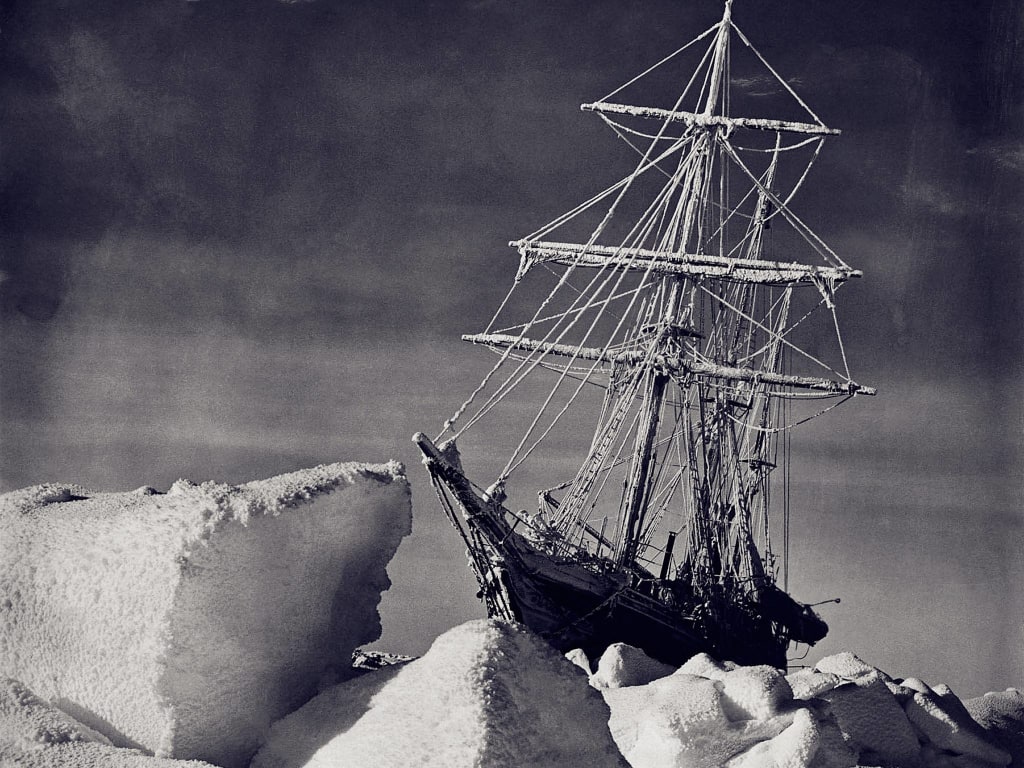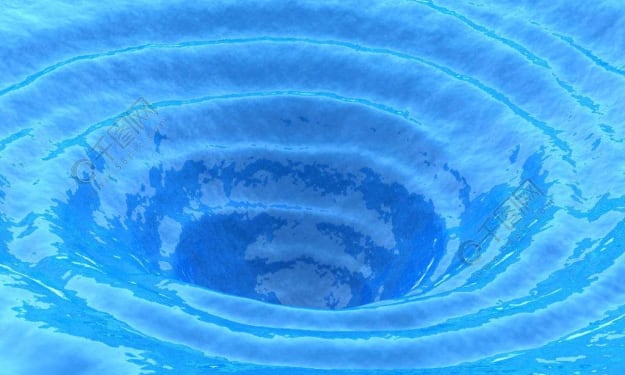Ice Sea Jedi: The Long Road to Survival
This is a very heroic story of survival from the dead in the history of sailing.

One
This is a very heroic story of survival in the history of sailing. It was August 8, 1914, when the Royal Antarctic Expedition left the Scottish port of Plymouth, just in time for the outbreak of the First World War. Shackleton's ship was a three-masted wooden ship, which was particularly resistant to the impact of ice. The ship was named "Polaris", and Shackleton renamed the ship "Endurance" with his family motto "Endurance wins".
Heading south, the expedition's last port of call was South Georgia, a desolate outpost of the British Empire in the subantarctic region where only a handful of Norwegian whalers lived. After leaving South Georgia, the Endurance set sail for the Weddell Sea, a dangerous sea adjacent to Antarctica that is infested with large groups of drifting ice. In more than six weeks, the Endurance traversed more than 1,000 miles of sea routes drifting with ice, and with about 100 miles to go from its final destination, a large swarm of drifting ice surrounded the ship, and the sharply falling temperature caused The sea quickly froze, and the Endurance was stuck.
For Shackleton, the blow was fatal. He is in his forties, and planning this expedition has consumed a lot of his energy. Europe is busy with a big war, and it will be difficult to have such an expedition in the future. Everyone on board knew that the final outcome was one of two: either hold on until spring, when the ice floes melt on their own, allowing them to escape; or the crushing force generated by the ice floes determines the fate of the ship. It is very likely that the ship will be crushed like an eggshell.
The next day, Shackleton ordered the ship to be abandoned, and the group got into the tent and spent the night on the ice. The tent was thin enough to let moonlight in, and the temperature was as low as minus 16 degrees Fahrenheit. The day after abandoning the ship, Shackleton gathered the group and calmly announced that the team would go on an ice march, targeting the northwest. Paulet Island, nearly 400 miles away. But the march to land was impractical: it was impossible to drag lifeboats laden with cargo (each weighing more than a ton) over huge blocks of ice and through deep snow. So Shackleton ordered to camp on the ice, and the camp on the ice sea became everyone's new home. Their staple food is penguins and seals, and seal fat has become the only fuel.
Two
By April, the ice under the camp had cracked, and Shackleton knew that the long-awaited thaw had come. On April 9, he ordered three lifeboats to be launched. Twenty-eight people packed into the boat with basic rations and camping equipment. The temperature dropped to minus 10 degrees, the waves poured on the uncovered boat, they didn't even have waterproof clothing, and everyone was shivering with cold.
Day and night, sometimes through dangerous waters with drifting ice, sometimes through rough seas on the ocean, the helmsman of each boat struggled to control the course, while the rest struggled to scoop out the water. Their boat struggled towards Elephant Island.
It was a terrifying adventure that didn't sleep for seven days and nights. It wasn't until April 15 that the lifeboats finally undulated under the steep cliffs of Elephant Island, and then began to land. But they soon discovered that there was no way to survive on this God-forsaken, snow-swept desert island. Raging winds of 80 mph swept across the glacier, tearing apart their tents and sweeping away what little they had - blankets, tarpaulins and cooking utensils. The sailors swarmed into the boats to take cover, while others lay on the ground, the clammy tents lying aside, the broken tarpaulins covering their faces.
Shackleton understood that the outside world would never come to this isolated island. The only possible way, and certainly the terrifying way, was for him to take the largest lifeboat, the "Kaird", and a few capable crew members, and paddle across an 800-mile stretch of the world's most dangerous sea in the South Atlantic. Road to the whaling station on South Georgia Island to call for help.
The "Caird" was a small 22.5-foot wooden boat. Shackleton chose five of the most reliable people: Wasley, who would serve as the navigator, whose pilotage skills had helped Shackleton in difficult conditions; two Irish sailors Carthy and Kling; and Kniss and Vincent.
Three
From the day after departure, the "Caird" was in trouble. During the 17-day voyage, 10 days encountered strong winds of magnitude 8 to 10. The icy waves drenched people, and in the canvas cabin, the off-duty crew lay in wet and rotten reindeer skin sleeping bags, and the dark and narrow space in the cabin gave people the feeling of being buried alive. After a few days, Vincent collapsed, and Knes was not doing well, although he was still holding on. All six found that their feet - which had been wet all along - had turned white from the cold, began to swell, and their epidermis had lost consciousness. In addition, their bodies were also worn and bruised by the salt-stained ice-hard clothing. But the "Caird" still stubbornly and mechanically weaved through all the winds and waves, always heading in the right direction.
As had been feared, Worsley had little access to a sextant, and could only measure wind and current with experience and instinctive intuition, relying primarily on dead reckoning algorithms - that is, sailors' estimates of direction and distance to navigate. The land they proposed to appear, South Georgia Island, was just a tiny point on a course of thousands of miles, and the slightest deviation would be missed. Reluctantly, they aimed their course at the island's uninhabited southwest coast, because even off the island, prevailing winds would blow them eastward to other lands. Conversely, if the course is towards settlements on the northeastern coastline of the island, if missed, unfavorable winds will blow them into the boundless ocean and drown them there.
As dusk approached on May 7, the 14th day, a large swath of seaweed floated past the boat. They rowed excitedly eastward-northeast all night, and by the afternoon of the 15th day, when the clouds cleared, Cassey shouted that he saw land.
This was not only a victory for the skill and will of the sailors, but also a victory for piloting. It seemed that God was deliberately trying to get through them, and the storm of the call sign failed all landing attempts that day. In addition, they found that the last remaining supply water was also slightly salty, and they were too thirsty. By the night of May 10, Shackleton and their squad used their last strength to finally get the Kaird to wash up on the gravel beaches of South Georgia.
Four
By sea, the nearest whaling station is also about 150 miles away, too far for a dilapidated ship and an exhausted crew. So Shackleton decided that he would lead Worsley and Kling straight through the interior of South Georgia to the whaling station in Stormness Bay. The distance is only 22 miles, but across rugged rocks and dangerous and terrifying ice crevices.
Shackleton's biggest worry was the weather, but at 3 a.m. on May 19, the weather was fine and there was a full moon hanging in the air, just in time for guidance.
Bright moonlight reflected from the glacier, and Shackleton, Worsley, and Kling left their companions and set off from the headland of King Hakon Bay towards the whaling station. They tried three times to climb over the steep rocks lying in front of them, but failed. The fourth time finally turned over, but the day was coming to an end. After the first steep slope, there was a long, steep snow slope across the ground on the other side, the bottom of which was hidden in mist. As the night approached, it was possible to freeze them at such altitudes. Shackleton calmed down for a while, "We slide down," he said finally. The three sat down in turn, each sitting behind the other, wrapping their arms around the person in front of them. The rope was wrapped around them, Shackleton sat at the front, and Kling was behind them, and they slid towards the dark abyss below...
At 3 p.m. on May 20, after a non-resting 36-hour trek, three men arrived near the Stemness Whaling Station, their faces black and dirty, smoked by seal fat fuel. Their tangled tousled hair dragged almost to their shoulders and was stained with salt, and they looked hideous.
The Norwegian whalers were completely petrified, but they still warmly entertained the victims. They carried Shackleton and three others into the whaling station on their shoulders. A ship was immediately dispatched to pick up the "Kelder" and three others.
Five
On Elephant Island, the dawn came clear and cold. It was August 30, 1916, and nearly five months after the departure of the "Caird", Wilder had begun privately preparing for another rescue operation.
Food stocks are running out. One of them, whose severely frostbitten foot had been operated on by two surgeons on the expedition, developed a bone infection and was in poor condition. Since arriving at Elephant Island, he has been lying silently in a soaked sleeping bag.
At 1 p.m., Wilder was preparing a bisque, a soup stewed with limpets picked up in the tide puddles. Suddenly, George Marston, the painter on the expedition, stuck his head excitedly in the shelter of two small boats, "Wilder, there's a boat." He said, "Light a fire, okay?" Before Wilder could react, all the people rolled to one piece, and they rushed to the shelter's sail door with the bisque in their hands, crushing the door.
Outside, the mysterious ship was getting closer and closer, and when it raised the Chilean merchant flag, everyone was confused for a moment. Less than 500 feet offshore, it dropped a small boat, and at that moment, everyone recognized Shackleton's strong and burly figure, followed by Kling's figure...
After nearly 20 months of wandering and suffering, Shackleton did not lose a single person. What a miracle!
About the Creator
Iverson
Hi, I'm from Spain and love writing.
Enjoyed the story? Support the Creator.
Subscribe for free to receive all their stories in your feed. You could also pledge your support or give them a one-off tip, letting them know you appreciate their work.






Comments
There are no comments for this story
Be the first to respond and start the conversation.